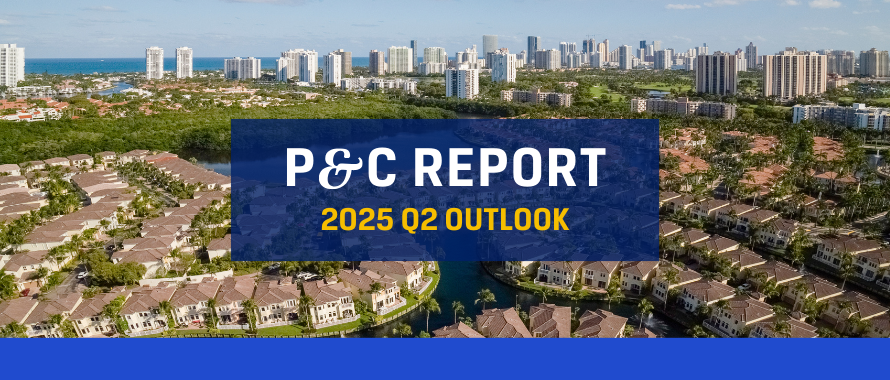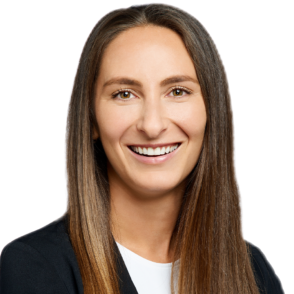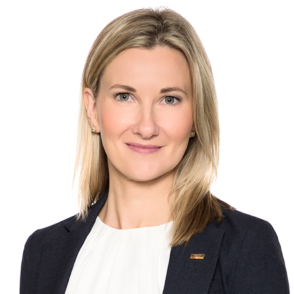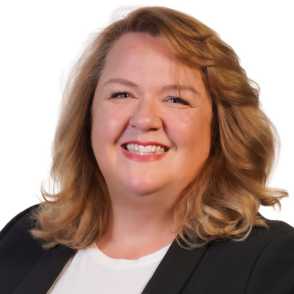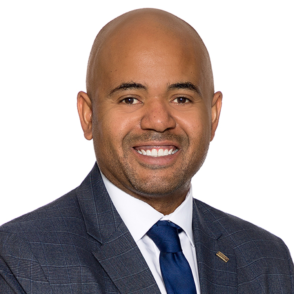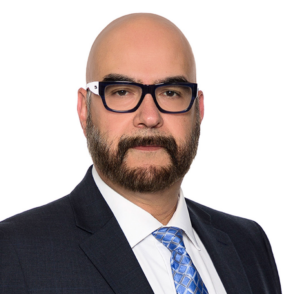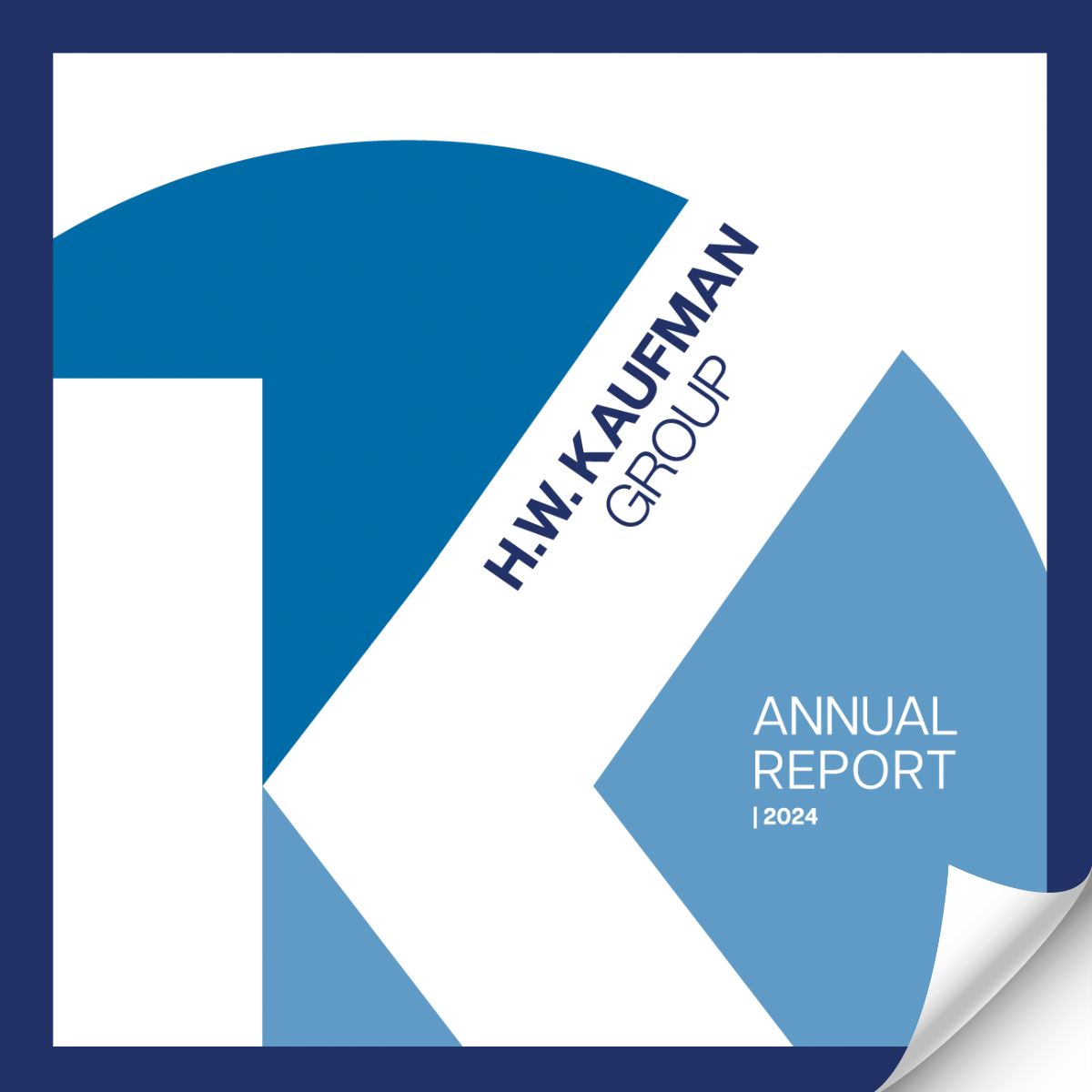Key Takeaways:
- Rates are beginning to stabilize or even decline in some non-CAT areas.
- Market capacity remains healthy, particularly in non-admitted spaces, although often through layered placements, which are becoming more common.
- Carriers are increasing reliance on exclusions and higher deductibles to manage risk.
- Wildfire and convective storm risks are driving significant change in both Personal and Commercial Insurance.
- “Home hardening” strategies—such as roof upgrades, defensible space, and water shutoff devices—are increasingly critical to accessing favorable terms.
- While the full impact of U.S. tariffs is uncertain, they likely will cause inflation in some areas, which could impact property valuations, reconstruction costs, and Professional Liability coverage.
INTRODUCTION
Demand for Property & Casualty (P&C) Insurance from the non-admitted marketplace continues to accelerate. In 2024, Excess & Surplus (E&S) lines generated over $81 billion in premiums, marking a 12% increase year-over-year. That outpaces the broader U.S. P&C market, which grew by 8% last year, according to S&P Global Market Intelligence. As more risks fall outside the appetite of admitted carriers, brokers and agents are increasingly turning to the E&S space to deliver creative, customized solutions for their clients.
As we commence Q2, we are closely monitoring the start of wind and storm seasons, wildfire activity, rate movements across all market segments, and key underwriting developments such as increased use of exclusions and stricter risk mitigation expectations.
Despite some of the volatility, today’s market offers strategic opportunities for brokers and agents to distinguish themselves through greater reliance on the emerging product offerings of the E&S sector.
Wind season approaching fast
The North Atlantic Hurricane Season begins June 1. Researchers at Colorado State University, considered among many as the preeminent source and historically most accurate, are predicting a more active-than-average hurricane season and estimate there will be 17 named storms, 9 of which will become hurricanes. While major hurricanes typically do not strike the U.S. until August or later, an early storm could increase Property rates by this summer.
Despite 18 named storms and five major hurricanes in 2024, Property markets have seen a wave of capital investment. This trend is fueled by high rates, favorable terms for carriers, and expanded exposure appetites. The result: more stable or even declining rates in many non-CAT regions.
At the same time, convective storms—tornadoes, hail, and wind-driven rain—are increasing in both frequency and severity. In March 2024, 100 tornadoes tore through 14 states, including several EF-4 events outside the traditional tornado alley. In January of this year, strong winds reached nearly 100 mph from Alaska to West Texas. These events show that wind risk is now a year-round, nationwide concern.
Southern California wildfires
The January 2025 wildfires in southern California caused an estimated $30 billion in losses—the largest catastrophic (CAT) wildfire event to date.
While it is still too early to predict the exact impact on the insurance industry, we have learned at least one of the key domestic high-value markets will not return to California. We expect carriers to become even more selective in the types of risks they are willing to insure, limiting coverages, and changing conditions. The California FAIR Plan will continue to write a large portion of risks in the state.
These wildfires also triggered secondary claims—most notably, smoke damage and business interruption. Legal battles over the legitimacy of such claims are likely, particularly given California’s active plaintiff’s bar.
Liability trends and challenging sectors
AM Best recently reported that the U.S. P&C industry reversed a $21.3 billion underwriting loss in 2023 to post a $22.9 billion gain in 2024, with a combined ratio improving to 96.6%.
Still, Liability market conditions vary widely.
- Soft Markets: Directors & Officers, Management Liability, and Cyber continue to see rate decreases as new capital boosts capacity.
- Hard Markets: Elder Care, Youth Care, and Special Needs coverage remain constrained due to heightened exposure to abuse and neglect claims—even when unfounded.
- Auto & Excess Umbrella: High-limit placements (e.g., $10M) increasingly require participation from five or more carriers, up from two a few years ago.
- Habitational & Liquor Liability: Sub-limits and exclusions (e.g., Assault & Battery, Firearms) are becoming common in these spaces, especially in high-risk jurisdictions.
A brief note about inflation
The long-term effects of newly imposed U.S. tariffs remain unclear but will likely contribute to rising prices—especially for building materials. Inflation could impact property valuations, reconstruction costs, and professional coverage for contractors and engineers. Burns & Wilcox will continue to track tariff impacts closely in the weeks and months ahead.
RATES
Rates have moderated in many P&C Insurance sectors given the added capital from new and existing carriers. Insureds in non-CAT zones with clean loss histories may even see rate reductions. However, markets like Commercial Auto, Habitational, and Liquor Liability remain challenged, with continued upward pressure on rates. Additionally, a single large CAT weather event could immediately shift the Property market back into harder territory—particularly during storm season.
CAPACITY
Overall capacity remains strong with few major restrictions. Even so, reaching desired coverage levels—particularly for higher-value properties—often requires participation from multiple carriers. The non-admitted market is especially helpful for hard-to-place risks. Burns & Wilcox maintains broad access to global solutions across sectors, even for complex or loss-heavy accounts.
TERMS & CONDITIONS
While the wordings of most policy terms and conditions have remained primarily consistent over time, exclusions and deductibles are increasing. The most common exclusions are Assault & Battery and Firearms, especially in the Hospitality and Habitational sectors.
Brokers and agents should also confirm retro dates for their clients, where applicable, and confirm that terms and conditions do not prevent insureds from securing desired coverage. As always, the devil is in the details, so understanding all terms and conditions is critical before purchasing a policy.
Contributor: Paul G. Smith, Corporate Senior Vice President, H.W. Kaufman Group, New York, NY
FORECASTS BY LINE OF BUSINESS
During the Burns & Wilcox P&C Market Outlook: Q2 2025 webinar hosted on April 3, 2025, our industry-leading subject matter experts delivered valuable insights into the evolving insurance landscape.
In the following, our experts delve deeper into specific sectors within P&C, explore trends, and share outlooks for the year.
Personal Insurance:
The Residential Property Insurance market is shifting, driven by a surge in natural disasters and escalating property values. In 2024 alone, insured losses from severe weather events reached a record $8.5 billion, surpassing the previous high of $6 billion set in 2016. Last summer, events such as the Jasper wildfires, Calgary hailstorm, and widespread flooding in major cities, led to approximately 228,000 insurance claims—a 406% increase compared to the 20-year average. This rise in claims has caused insurers to tighten underwriting standards, leading to higher deductibles, stricter policy exclusions, and increased surcharges—particularly for properties in CAT-prone regions.
At the same time, inflation and rising home values are making insurance more expensive. Re/Max Canada’s 2025 housing outlook projected a 6% annual increase in average home prices this year, or 7% in the single-family detached market, pushing the average price above $900,000, making homeownership unaffordable for many families. This has also driven demand in the rental market, increasing the value of rental properties while adding complexity to insurance placements. Additionally, the rising cost of building materials continues to drive up replacement values, with replacement cost inflation now at or above 5%.
As a result, more homeowners are turning to specialty insurance to secure adequate coverage. Homes with prior claims, unique structures, high-value assets, or nontraditional uses—such as short-term rentals, multi-use properties, and home-based businesses—often do not fit within the guidelines of standard insurance carriers. Reentering the standard market is extremely difficult once a policy is denied or non-renewed. The specialty market provides customized, flexible solutions for hard-to-place and high-risk properties.
In recent years, while some areas have seen rate stabilization or softening, regions prone to severe weather are experiencing gradual rate increases, particularly following the significant hailstorms and flooding in 2024.
Contributors: Michelle Allemang, Manager, British Columbia, National Product Leader, Personal Insurance, Burns & Wilcox, Vancouver, BC; Deanne Taylor, Manager, St. John’s, Atlantic Division, Burns & Wilcox, St. John’s NL
Commercial Insurance:
As Q2 2025 progresses, Canada’s Commercial insurance market remains highly competitive, with rates continuing to drop. While current pricing is unsustainable, early signs indicate a potential hardening within 12 to 18 months. In the meantime, renewal retention is holding steady, supported by strategic rate and coverage adjustments.
Burns & Wilcox maintains strong broker relationships and a clear focus on delivering fast, specialized solutions. We continue to see high demand for General Liability risks, particularly in Contractors, U.S. product exposures, and Hospitality. Our capabilities also extend to vacant properties, mixed occupancies, small low-hazard contractors, welding contractors, and hard-to-place Property and Liability risks.
To better support brokers, we have streamlined internal processes for faster quoting—often the same or the next day—and are preparing to launch a new program later this quarter to meet emerging market needs.
Contributor: Patricia Sheridan, Associate Managing Director, Burns & Wilcox,Toronto, ON
Construction:
The Construction Insurance market remains soft, with ongoing pressure on rates and capacity. A potential wildcard is the threat of new tariffs, which could impact material costs—similar to the increases seen during the COVID-19 pandemic. We are closely monitoring this development and its implications for insurance needs.
Despite challenges, solutions are available. Our competitive product offerings and exceptional service position us as the go-to partner for Construction risks of all sizes. We are also working on new enhancements to our Builder’s Risk program, which will offer tremendous value to our brokers and their clients.
Contributor: Steven Hrab, Director, Construction, Burns & Wilcox, Toronto, ON
Professional Liability:
The Professional Insurance market continues to adapt to the increasing challenges of the first quarter of 2025. Cyber threats remain a pressing concern, yet many insureds still lack the understanding of the overall need for this product line in their insurance portfolio. This gap underscores the importance of offering flexible Cyber Insurance options—whether standalone or as an add-on—to safeguard against the financial and operational fallout of cyber breaches.
Additionally, the demand for tailored coverage in the Architects & Engineers (A&E) and Miscellaneous Errors & Omissions (E&O) sectors is growing. To meet these needs, Burns & Wilcox partnered with new markets this year, enhancing our ability to deliver innovative and competitive solutions that address these professional industries’ unique exposures. Our offering is up and running with our in-house capabilities, and we have received positive feedback on both the coverage and pricing.
So far this year, we have seen an uptick in health and wellness submissions, so we continue to work closely with our existing markets to provide exceptional coverage for our prospects. In addition, we have developed new market relationships to offer competitive pricing within the current marketplace.
At Burns & Wilcox, we remain focused on empowering brokers to educate their clients and navigate complex risk exposures. By combining our market expertise with a commitment to exceptional service, we aim to provide the resources you need to build trust and deliver tailored solutions.
Contributor: Danion Beckford, Senior Underwriter, Professional Liability, Burns & Wilcox, Toronto, ON
Environmental Insurance:
The second quarter of 2025 remains in a hard market, with no signs of softening through year-end. Excess Liability capacity continues to be a challenge, especially within Auto. Many Excess markets are further tightening their
The Canadian Environmental market remains soft, with some capacity hardening in certain areas. There continues to be observations of clients shutting down, declaring bankruptcy, or being acquired by larger operators (particularly in the contracting and waste sectors), perhaps as symptoms of the state of the greater market. New entrants and less technical Environmental Insurance purveyors are expected to continue sacrificing rates–sometimes unsustainable–in exchange for market share.
In such disruptive—though certainly cyclical—conditions, strategic Canadian brokers are likely best advised to continue focusing on reliable underwriting partners who emphasize underwriting integrity (as a measure of equal importance to coverage, pricing, service, etc.). This holistic and strategic partnering will likely produce higher retention percentages for renewal business. Further, there remains a space between rate wars and sound technical excellence where mindful underwriters will achieve some new business success, irrespective of market conditions.
In the aggregate and being realistic, adverse market conditions are expected to continue to challenge Environmental Liability Insurance brokers and underwriters through the second quarter of 2025.
Contributor: Karim Jaroudi, Manager, Environmental, Burns & Wilcox, Toronto, ON
Transportation Insurance:
The Transportation sector is gradually stabilizing, though some regions report tighter capacity than anticipated. Cross-border transport challenges persist, with regulatory updates potentially impacting operational costs. Insurers are closely monitoring claim trends, especially in high-theft areas, which could influence rate adjustments in the latter half of the year.
Insurers are placing an even stronger emphasis on detailed underwriting data, requiring more precise risk assessments. Businesses leveraging AI-driven fleet monitoring and predictive analytics for safety improvements may gain preferential treatment from carriers.
Expanding partnerships and evolving market conditions have enhanced our coverage offerings, providing more flexible solutions for mid-sized trucking operations. Our Loadsure integration continues to gain traction as demand for on-demand coverage grows.
Our team remains focused on delivering proactive risk management insights and customized coverage solutions, ensuring clients stay ahead in an evolving market landscape.
Contributor: Fernando Batista, Manager, Transportation, Burns & Wilcox, Toronto, ON
LONDON MARKET UPDATE
Overall, the London market is navigating successfully a complex landscape marked by geopolitical uncertainties, financial challenges, regulatory changes, technological advancements, and evolving market dynamics. Lloyd’s 2024 results are now confirmed showing strong profits with a CoR of 87%.
Our update this quarter is a tale of two halves, Property down and Excess Casualty up.
Property:
Market conditions softened quicker than anticipated in Q1, predominantly reacting to domestic and alternative markets widening terms and offering rate relief to capture a greater market share.
Currently, pricing adequacy is at a long-term high resulting in greater capacity availability; however, many London markets remain cautious with risk appetite and the reduction in rate. Weather events in recent years, political challenges, and the recent California wildfires are reminders of the perils that have significantly impacted profitability.
As a result, markets are looking at technology solutions to analyze further and protect all aspects of their portfolios. There is a continued focus on technology throughout the Lloyd’s market to increase the ease of transacting business with London and on how best to navigate and manage the softening market trend with a greater analytical focus. Digital binding solutions, exposure analytics, and event response are all high on the agenda. As the market transitions, London needs to ensure sustainable and ongoing profitability, which is only possible with ongoing investment.
Lloyd’s ability to be nimble in times of uncertainty should be a key focus within the business. The array of products available, as well as the adaptability of these products, will lead to greater competitive advantage during the softening cycle.
Contributor: Kerry Hall, Director, Commercial, H.W. Kaufman Group London
Excess Casualty:
As rates continue to increase in the U.S. and domestic markets cut back capacity, particularly in more challenging sectors such as Real Estate and Transportation, more clients are accessing the London and Bermuda markets. As a result, the international market is becoming increasingly crucial for Excess Liability.
The Excess market continues to be challenged by the adverse development of their historical books, nuclear verdicts, and social inflation. London and Bermuda rate increases remain consistent at mid to high single digits, with poor-performing risks seeing much higher increases with potential cutting back in capacity.
We expect to see small lines of circa $5M of strategically placed capacity deployed lower down towers with ventilated additional capacity higher up placements. The focus of the London market will be filling in gaps in tough complex placements and providing creative loss-sensitive swing and Alternative Risk Transfer solutions, particularly in the Transportation space. These provide longer-term stable solutions to manage increasing deductible and self-insured retention levels.
While rates have increased, very few markets have been exiting, providing stability to clients. That said, a number of markets such as Scor, Starr, and Everest have repatriated underwriting authority back to the U.S. New entrants, mainly MGAs, have added to the increased presence. In Bermuda, there are now 21 markets writing Excess Casualty business, with more predicted to follow in late 2025. Like London, the new capacity has focused on filling in tower gaps.
Clients globally continue to benefit from the stability and consistency of the London and Bermuda markets.
Contributor: Declan Durkan, Managing Director, Non-Marine, H.W. Kaufman Group London
CONCLUSION
The E&S market continues to offer flexibility that comes with freedom of rate and form. Because of this, brokers and agents may want to consider E&S policies for clients who have been previously covered in the traditional market. This option may provide coverage that is not available elsewhere, more favorable rates, or tailored terms that best cover the underlying exposure.
The E&S market can also offer customizable solutions, such as wind and wildfire deductible buybacks, Earthquake coverage, Personal Article Floaters, and more. Burns & Wilcox works with its retail partners to understand their needs while providing the most creative options that admitted markets generally cannot offer.
Insureds can help themselves by addressing the home hardening trends through active investment in risk mitigation strategies. Hard Commercial markets in areas such as A&B, Auto, Habitational, and Liquor Liability will continue while other markets like D&O have softened.
Brokers and agents can best help clients secure the coverage they need through reliance on the expertise of Burns & Wilcox, which provides creative solutions in the E&S marketplace. This is best accomplished when carrier and underwriters’ expectations, such as those listed below, are known in advance.
- Provide full details on risk mitigation strategies in use, such as leak detection systems.
- Submit complete submissions with details that answer the question, “Why is this risk coming into the E&S space?”
- Recognize the impact of technology used by carriers and other third parties. This includes access to satellite imagery, which can identify poorly maintained property, crime scoring, and more.
As always, Burns & Wilcox can help brokers and agents find solutions for hard-to-place risks given our experience, growing line of products, investments in big data and industry connections. We are leaning into advanced decision-making tools to help manage evolving risks in a significant way. Finally, Burns & Wilcox helps identify policy options, confirming coverages, exclusions, sublimits, and other important nuances that are often overlooked.
Contributor: Paul G. Smith, Corporate Senior Vice President, H.W. Kaufman Group, New York, NY
Disclaimer: The above information has been prepared solely for the purpose of sharing general information regarding insurance and business practice management issues. These are just our opinions and are not intended to constitute legal advice or a determination on issues of coverage.

